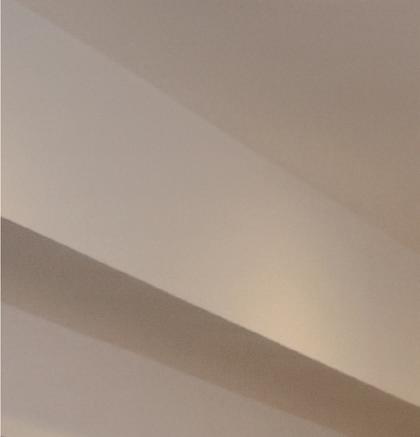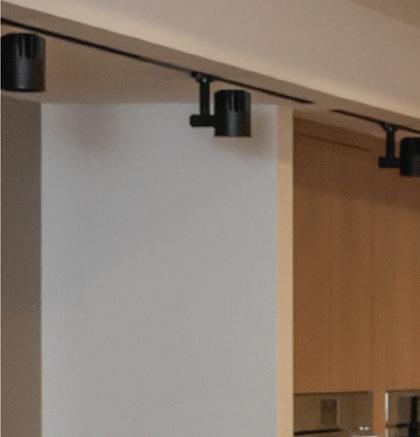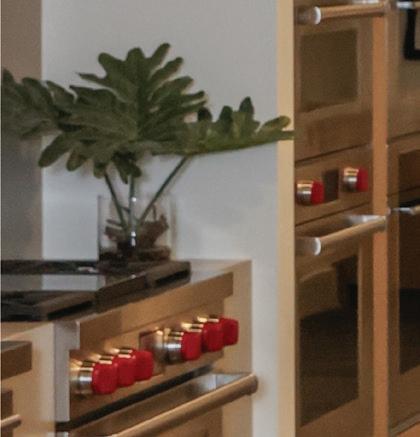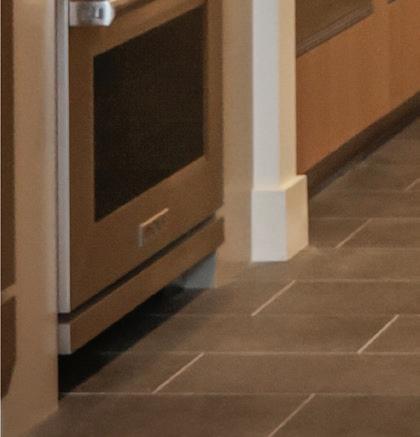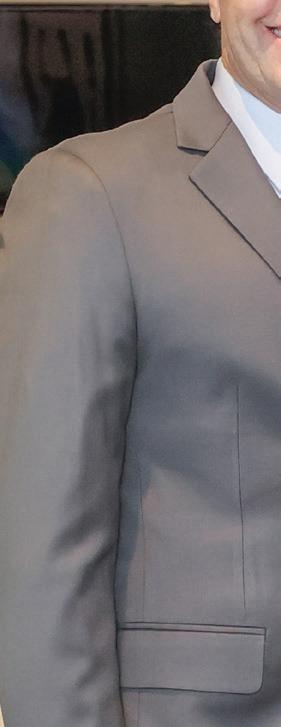

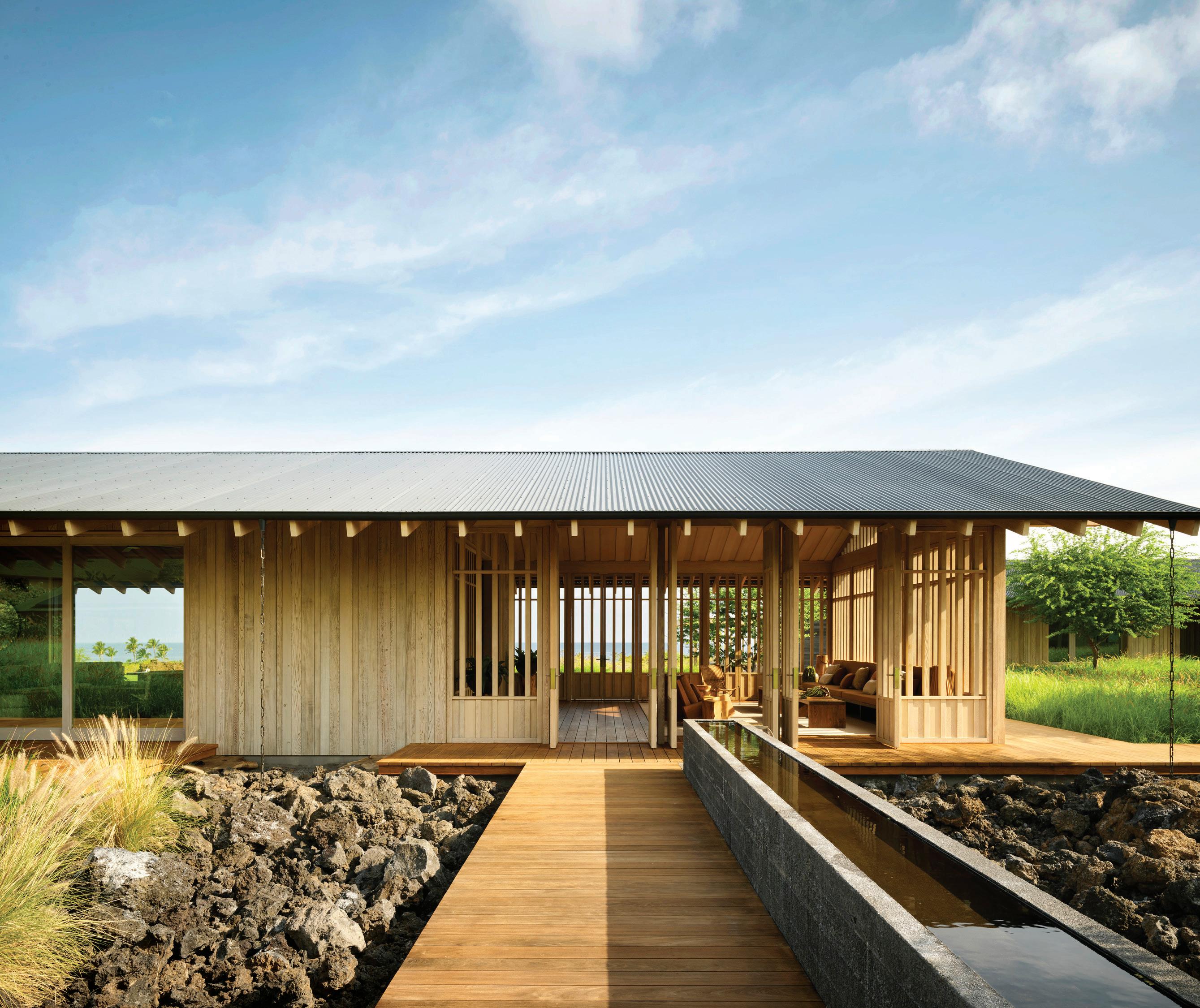






82 MAHALO TO OUR SPONSORS
83 AWARD LEVELS AND PROJECT CATEGORIES
84
MEET THE JURORS
85 AIA FRAMEWORK FOR DESIGN EXCELLENCE 86-95
JURIED AWARDS: AWARDS OF EXCELLENCE AWARDS OF MERIT HONORABLE MENTIONS
96 COLLABORATION AWARDS
97
STUDENT DESIGN AWARDS
98
DISTINGUISHED ENTRANTS
99
STUDENT DISTINGUISHED ENTRANTS
Wayne Goo, AIA 2024 AIA HONOLULU PRESIDENT 81 PRESIDENT’S MESSAGE

DESIGN AWARDS
COMMITTEE CHAIRS
Ryan Sullivan, AIA
Stephanie Ing, Assoc. AIA
Juliann Chen, Assoc. AIA
Kristoffer Jugueta, Assoc. AIA
AIA HONOLULU STAFF
Julia Fink, EVP
Camilla Nicholas, Assistant Director
Skylyn Woodward, Admin & Events

AIA Honolulu celebrates the exceptional design accomplishments of our chapter members every year. Since 1958, we have been recognizing outstanding projects, and we continue to do so with our 66th Annual Design Awards. Our aim is to acknowledge and promote design excellence within our community, highlighting the significance of good design.
The judging process carefully evaluates how each project aligns with The American Institute of Architect’s (AIA) Framework for Design Excellence, which outlines 10 fundamental design principles focused on advancing towards a zero-carbon, healthy, just, resilient, and equitable built environment. By prioritizing these principles, architects actively contribute to the progression of the Hawai‘i Clean Energy Initiative, with the ultimate goal of achieving 100% clean energy by 2045, and the federal government’s strategy to achieve net-zero emissions from the buildings sector by 2050.
This year, we have seen a significant increase in the number of award submissions in the Unbuilt category, surpassing volumes from previous years. This trend clearly indicates the growing pride of our design community in their work and their eagerness to share their achievements with their colleagues.
Mahalo to all of our members and students who submitted projects for consideration. Special thanks to this year’s jury for taking on the challenging task of selecting the best of the best to receive awards. And finally, congratulations to the award recipients.
DESIGN AWARDS
COMMITTEE
Calvin Bulan, Assoc. AIA
John Fullmer, AIA
Lisa van den Heuvel, Allied Member
Katalina Kim, Assoc. AIA
Liana Takamine, AIA
Lorena Yamamoto, AIA
EDITOR
PUBLISHER
Steve Petranik
CO-PUBLISHER
Kent Coules
CREATIVE
DIRECTOR
Jeff
SENIOR ACCOUNT COORDINATOR
Rebecca Brooking
ACCOUNT
EXECUTIVES
Pam Saito
YongChae Song
AIA Design Awards 2024 is published by Hawaii Business Magazine, in partnership with AIA Honolulu, September 2024
©2024 by aio Media Group, 1088 Bishop St., Suite LL2, Honolulu, HI 96813.
TO OUR 2024 AIA HONOLULU DESIGN AWARD SPONSORS!
KAIAULU PREMIER SPONSOR
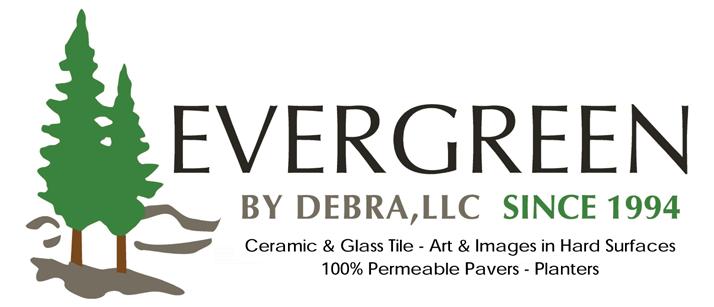

KAUHALE SPONSORS
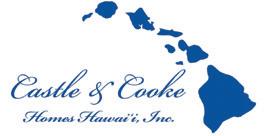

COCKTAIL SPONSORS





PUPU SPONSOR

AWARD SPONSOR

MAMALU SPONSORS



KAHUA SPONSORS




Requires unanimous vote of the jury that a project excels in all aspects. Reserved for those projects which stand out from all of the meritorious award winners. This highest honor recognizes projects which are deemed to exemplify excellence of architectural design on all levels of analysis, and exemplify the highest standards to which AIA members aspire.
Requires consensus from the jury that a project is deserving for a high quality of work overall. Granted to projects which display a high standard of architectural quality and design.
Responds to notable achievements in one or more particular project aspects; area(s) that stood out, as agreed through consensus by the jury.
Projects are submitted and judged in one of our seven categories. The number of projects awarded in each category and the award level (Excellence, Merit, Honorable Mention) shall be determined by the jury.
Completed projects including single-family residential, multi-family residential, residential housing community planning, and residential renovations, additions and historic preservation. Residential projects of various sizes and scope are welcome as long as the project involved substantial exterior alterations.
Completed projects including public and private developments of a commercial nature comprising retail, industrial, manufacturing and hospitality.
Commercial renovations, historic preservation, adaptive reuse as well as new construction projects are eligible.
Completed projects including public and private developments of an institutional nature: K-12 and higher education, recreational facilities/parks, hospitals and medical facilities, and utilities.
Completed projects involving substantial interior and minimal exterior alterations. Examples of projects in this category include, but are not limited to, tenant improvements and new tenant spaces within an existing (or by others and/or previously completed) exterior shell/space. Also includes residential interior renovations with minimal exterior improvement.
Unbuilt entries may include any project that is commissioned (client sponsored) or intended for construction, purely theoretical work not intended for construction, submitted individually (by AIA or Assoc. AIA), as a team. The jury will review and select entries in this category based on creativity, originality, power and potential of the ideas presented.
Recognizes projects that are designed to remove barriers and burdens, physical or abstract, empowering and enabling people to gather, connect, live and function to their highest potential, ultimately bringing a community together. This award is unique in that it relies on the experiences of end users. Entries must demonstrate significant social impact.



LAURA AYERS , AIA, LEED AP (AIA HONOLULU) PRINCIPAL & CO-OWNER, WHITESPACE ARCHITECTS
APRIL HUGHES AIA, NCARB, LEED AP BD+C (AIA CHICAGO) PRESIDENT, HPZS

WhiteSpace Architects is a woman-owned architectural firm with offices on Oahu and the Big Island. Laura received a Bachelor degree from Georgia Tech and a Master's in Architecture from the University of Michigan. She moved to Hawai‘i and joined Philip White Architects in 2001 and became licensed in Hawai‘i in 2006. She earned an ownership role in 2016 when she and Pip White became partners and re-branded the firm as WhiteSpace Architects. With over two decades of experience in architecture, she has led many of the firm's most notable and award-winning commercial, educational, and residential projects. Laura spearheads two quarterly events for the local industry: a luncheon for female architects to encourage mentorship and a Small Firm Roundtable discussion. She is also on the AIA Board of Directors for 2024-25.
April is the President at HPZS. Since graduating from the University of Kansas, she has received recognitions like the 2014 AIA Chicago Dubin Family Young Architect of the Year and the AIA Illinois John Wellborn Root Award in 2013. She is dedicated to the firm's mission as a woman-owned enterprise, and she advocates for a net-zero future, all while championing opportunities for women, ensuring their voices are heard and valued. She brings vast experience in sustainable design, with a track record of delivering platinum-rated LEED projects and pioneering net-zero energy designs. She served on AIA Wisconsin Design Excellence and was named a DuPont Emerging Leader at the Design Futures Council Sustainability Summit. She served as Board President of AIA Chicago in 2020, highlighting her emphasis on community enrichment and driving positive change within and beyond the industry.

YASUSHI ISHIDA , AIA (AIA HONOLULU)
ARCHITECT & ASSISTANT
PROFESSOR, UNIVERSITY OF HAWAI'I AT MĀNOA SCHOOL OF ARCHITECTURE
Yasushi Ishida is a licensed architect and an Assistant Professor at University of Hawai'i at Mānoa School of Architecture. He received his MArch from the Southern California Institute of Architecture in 2004. He has over 15 years of professional experience, working for firms such as Atelier Hitoshi Abe, Gensler, Morphosis, and Michael Maltzan Architecture, serving a significant role in projects such as The Broad Museum (Los Angeles), Emerson College (Los Angeles) and Phare Tower (Paris, France). Previously, Ishida has been a visiting assistant professor at Woodbury School of Architecture from 2015 to 2018 and has taught at Cal Poly Pomona.
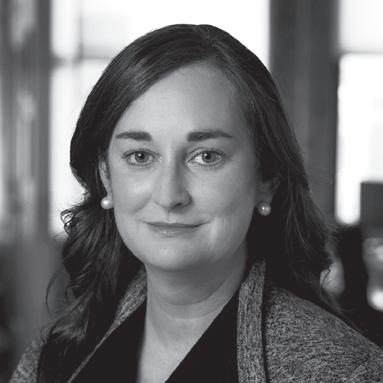
JASON DAVIS , AIA, LEED AP (AIA HONOLULU) PRINCIPAL ARCHITECT, RIM | A GHD COMPANY

Driven by extreme climate design, Hale champions net-positive, resilient buildings and communities both in urban and remote areas. He delves into the critical intersections of place, energy, water, equity, culture, infrastructure, climate change, and local vulnerabilities, empowering green design with the goal of building and community self-sufficiency. At Ferraro Choi, Hale leads preplanning, vulnerability studies, green and regenerative design processes while spearheading FCA Research with a mission of innovation and sharing. MEET THE JURORS | PROFESSIONAL CATEGORIES MEET THE JURORS | STUDENT CATEGORIES
As Principal, Jason is a leader and mentor to a new generation of young architects while serving as the company’s “go-to” creative designer and project manager. He is a tireless innovator who always pushes to adopt new technologies. He is inspired by Hawai‘i’s natural beauty, and strives to incorporate local history, culture, and art in his designs. He has 27 years of experience in architectural design and project management, and has spent more than eight years with RIM over two stints with the company. Specializing in creative and culturally inspired hospitality projects, he has worked on some of RIM’s most daring and recognizable projects including the Honolulu Design Center, UH Cancer Center, high-profile hotels and shopping centers across O‘ahu. He believes that having a complete understanding of a place – culture, climate, and community – is the key to a successful design.
BRIAN MASUDA AIA, LEED AP, WELL AP (AIA NEW YORK) DESIGN PRINCIPAL, ENNEAD ARCHITECTS
Brian is a Design Principal at Ennead Architects and an alum of the University of Hawai'i School of Architecture. With a portfolio including award-winning projects in higher education, visual and performing arts, commercial mixed-use, retail, research laboratories, and healthcare across the United States and Asia, he brings diverse experience and perspective to his collaborative design process. As a co-leader of Ennead's Cultural and Performing Arts Center of Excellence, he serves as an office resource focused on performing arts and cultural project metrics, trends, and innovations. Additionally, he has contributed his expertise as an educator, teaching integrated design at Cornell and Columbia Universities. Brian recently served as a distinguished member of the Urban Land Institute New York 2023 awards for Excellence in Development Jury.

HAZEL GO , AIA (AIA HONOLULU) ASSOCIATE AND PROJECT ARCHITECT, WCIT ARCHITECTURE
A graduate of Carnegie Mellon University, Hazel is an architect with design and architectural expertise gained from working on local, national, and international projects in New York City, Washington, D.C. and now in Honolulu with WCIT Architecture. Her experience working on a broad range of project typologies and scales over the last 18 years has contributed to her attention to detail, efficiency, forward thinking and flexible management style, and a design process grounded in the outdoor environment, the human experience of place, and story-telling; while her love of natureanimals, plants, and the ocean - provides a constant source of inspiration.


LORRIN MATSUNAGA , AIA, LEED AP (AIA HONOLULU) FOUNDING PARTNER, URBAN WORKS
Lorrin is a partner at Urban Works in Honolulu, which has focused on the design of educational, housing and community-related projects since its founding in 1984. Lorrin maintains active involvement on projects to provide design leadership and to foster dialogue between the client, stakeholders, and design team. After receiving his Bachelor of Arts in Environmental Design and Master of Architecture degrees from the University of Washington, Lorrin worked in smaller firms in Seattle, where he learned about the joy of creative design, mentorship and appropriate placemaking. He believes in the importance of reading, drawing and travel to help formulate ideas and intentions, and to experience architecture first-hand.

Good design elevates any project, no matter how small, with a thoughtful process that delivers both beauty and function in balance. It is the element that binds all the principles together with a big idea.
• What is the concept or purpose behind this project, and how will the priorities within the nine other principles inform the unique approach to this project?
• How will the project engage the senses and connect people to place?
What makes the project one that people will fight to preserve?
• What design strategies can provide multiple benefits across the triple bottom line of social, economic, and environmental value?
Design solutions affect more than the client and current occupants. Good design positively impacts future occupants and the larger community.
• What is the project’s greater reach?
• How could this project contribute to creating a diverse, accessible, walkable, just, human-scaled community?
• Who might this project be forgetting?
• How can the design process and outcome remove barriers and promote inclusion and social equity, particularly with respect to vulnerable communities? What opportunities exist in this project to include, engage, and promote human connection?
• How can the design support health and resilience for the community during times of need or during emergencies?
Good design mutually benefits human and nonhuman inhabitants. What we design has a direct impact to the ecosystems in and around the site. Understanding the site dynamics will allow us to be more conscious of our impacts.
• How can the design support the ecological health of its place over time?
• How can the design help users become more aware and connected with the project’s place and regional ecosystem?
• How can the project support regional habitat restoration?
• How can the project support equitable access to nature?
Good design conserves and improves the quality of water as a precious resource.
• How does the project use water wisely, addressing efficiency and consumption while matching water quality to appropriate use?
• How can the project’s water systems maintain function during emergencies or disruptions?
• How does the project handle rainfall and stormwater responsibly?
• How does the project contribute to a healthy regional watershed?
Good design adds value for owners, occupants, community, and planet, regardless of project size and budget.
• How do we design robust projects that enhance economic, natural, intellectual, and experiential resources?
How will the design choices balance cost with long-term value?
• How can the performance of this project be improved in ways that are cost and design neutral?
Good design depends on informed material selection, balancing priorities to achieve durable, safe, and healthy projects with an equitable, sustainable supply chain to minimize possible negative impacts to the planet.
• What factors (priorities) will be considered in making material selection decisions?
• How are materials and products selected and designed to reduce embodied carbon and environmental impacts while enhancing building performance?
How can material selection reduce hazards and support equitable labor practices in the supply chain?
• How does the project promote zero waste throughout its life cycle?
How does the project celebrate local materials and craft?
• How long will the project last, and how does that affect your material?
Good design reduces energy use and eliminates dependence on fossil fuels while improving building performance, function, comfort, and enjoyment.
• How can passive design strategies contribute to the project’s performance and form?
• How can the project exceed building code efficiency standards to approach net zero energy and net zero carbon?
• Can the project be powered by clean, renewable energy sources?
• How can the project provide for continuous performance improvements over its lifetime?
Good design supports health and well-being for all people, considering physical, mental, and emotional effects on building occupants and wider surrounding community.
How can the design encourage a healthy lifestyle?
• How can the project provide greater occupant comfort?
• How can the project be welcoming and inclusive for all?
• How can the project connect people with place and nature?
How can material selection reduce hazards to occupants and communities throughout the supply chain?
Adaptability, resilience, and reuse are essential to good design, which seeks to enhance usability, functionality, and value over time.
• How does the project address future risks and vulnerabilities from social, economic, and environmental change?
• How is the project designed for adaptation to anticipate future uses or changing markets?
• How does the project address passive survivability and/or livability?
Every project presents a unique opportunity to apply lessons learned from previous projects and gather information to refine the design and construction process.
• How can the design process foster a long-term relationship between designers, users, and operators to ensure design intentions are realized and the building project performance can improve over time?
• How are performance data and experiential stories shared, even if the findings fall short of the vision?
• What strategies promote a sense of discovery and delight?
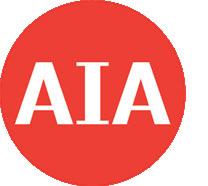
The world today is facing broad and complex challenges that threaten every aspect of our lives. The architect’s call to protect the health, safety, and welfare of the public has a new and broader meaning amid challenges such as increasing climate extremes and social inequity.
Every project can be used as a platform for addressing big problems and providing creative solutions. Every line drawn should be a source of good in the world.
The Framework for Design Excellence represents the defining principles of good design in the 21st century. Comprised of 10 principles and accompanied by searching questions, the Framework seeks to inform progress toward a zero-carbon, equitable, resilient, and healthy built environment. These are to be thoughtfully considered by designer and client at the initiation of every project and incorporated into the work as appropriate to the project scope. The Framework is intended to be accessible and relevant for every architect, every client, and every project, regardless of size, typology, or aspiration.
The Framework for Design Excellence challenges architects with a vision the profession strives to achieve.


AWARD OF EXCELLENCE
HAWAI ‘ I ENERGY AWARD FOR EXCELLENCE IN ENERGY-EFFICIENT DESIGN
THE MAYOR ’ S CHOICE AWARD INSTITUTIONAL
FIRM G70
CLIENT State of Hawai‘i Department of Education
CONTRACTOR Nordic PCL Construction, Inc.
LOCATION Kihei, Maui, Hawai‘i
PHOTOS: OLIVIER KONING; TRAVIS ROWAN PHOTOGRAPHY
ABOUT THE HAWAI‘I ENERGY AWARD FOR ENERGY-EFFICIENT DESIGN The Hawai‘i Energy Award recognizes buildings that help Hawai‘i toward our 100% clean energy goals by incorporating energy efficiency as a foundational value.
ABOUT THE MAYOR'S CHOICE AWARD
The Mayor's Choice Award was selected by the Honolulu Mayor Rick Blangiardi among all the entries.
BUILDINGS CAN HAVE AN IMPACT ON OUR CONSCIOUSNESS, WHETHER WE REALIZE IT OR NOT. With that in mind, Kūlanihāko‘i High School, in Kihei, was designed with “forward thinking,” says Charles Kaneshiro, AIA, President, G70 Design, in Honolulu. “We wanted to build something special for the students.”
The result is a LEED certified building, pursuing a Living Building Futures - Net Zero Building certification. “It’s like LEED on steroids.” Kaneshiro says.
The 50-acre campus operates completely off-grid, with net-zero energy. It is integrated into the surrounding environment from the landscaping to the aluminum trellises over 2-story classroom buildings to reduce temperatures. It’s even designed with awareness to where the sun rises and sets, and to provide shade from the warm Kihei sun, to naturally reduce heat in the buildings.
“You’ll notice a 10-degree drop in temperature,” Kaneshiro says. “You’ll see the students hanging outdoors, because it’s quite comfortable, like being under the shade of a tree.”
Other features of the campus include a stormwater retention system that prevents the school from flooding by using a large retention basin.

“This project stands out for its thoughtful and thorough approach, evident in its decade-long development. The comprehensive sustainability strategy, from building design to site planning, demonstrates a deep understanding of local context and commitment to sustainability.” — JUROR’S COMMENT


The state-of-the-art, multi-million-dollar campus opened in 2023 and currently has about 800 students. The master plan allows for double that, with each classroom building able to accommodate about 400 students.
Though it may look expensive, the campus was not designed beyond any other high
school Department of Education budgets, says Kaneshiro.
“That was the mantra. We have to do it within a standard high school design budget. (The DOE) didn’t spend any more money (on this campus) than if they built any standard concrete block school.”
“At the campus level, the positioning of the library and cafeteria centrally as the 'heart' of the campus is very effective. These spaces, along with their large covered-exterior communal area, act as a hub or mixing chamber, enhancing the campus's social dynamics.” — JUROR’S COMMENT

AWARD OF EXCELLENCE
RESIDENTIAL
FIRM Walker Warner
ADDITIONAL DESIGN FIRMS Philpotts Interiors (Interior Design); David Y. Tamura Associates (Landscape Design)
CLIENT Withheld per owners' request
CONTRACTOR Metzler Contracting Co. LLC.
LOCATION Kailua-Kona, Hawai‘i Island, Hawai‘i
PHOTOS:
SIMPLICITY IS AT THE ESSENCE OF HALE KIAWE.
Living symbiotically with island culture and environment was the inspiration behind designing this residential project, and the result embodies that intention.
When creating the property within the Kūki‘o Resort on the Kona Coast, special attention was given to organizing the entire space, thinking pretty much about “what we can do without,” says Gregory Warner, AIA, architect, founder & partner at Walker Warner, the architectural firm behind the design.
The residence sits above a forest of Kiawe trees, hence the name. It reflects a minimalist approach, in keeping with values of quietness and simplicity.
The inspiration for the residence stems from the owners’ point of view: what’s needed, and also what is not needed, keeping the design as simple as possible, based on their environmental and cultural values.

The site was developed with attention to “what the land wants,” and the design firm worked closely with the landscape architects to create an idyllic living space in accordance with the island’s environment, Warner says.
The residence is also reflective of local, agricultural designs, in keeping with where the residence is located within the islands. There is a “pico,” or center, of the project, around which other buildings reside. The architecture is practical, simple, with light coming in from two sides, with cross-ventilation.
This design reflects something new in residential resort design, Warner says.

“The Hale Kiawe residence is exemplary and satisfying on many different levels - as a response to site circumstance – approach, views, privacy vs. openness, etc. – and to formal architectural expression, materials and informed detailing. The parallel pavilions and their shifting within the landscape provide separation/privacy and singular views.”
— JUROR’S COMMENT


TFIRM G70
CLIENT City and County of Honolulu, Department of Land Management
CONTRACTOR Allied Builders System
LOCATION Honolulu, O‘ahu, Hawai‘i
PHOTOS: HAWKINS BIGGINS; OLIVIER KONING
HIS ADAPTIVE REUSE AFFORDABLE HOUSING PROJECT SHOWCASES A BLEND OF DESIGN SENSIBILITY AND SUSTAINABILITY. The four-story mixed-use building integrates 27 apartments with essential community services and resources. Notable features such as natural ventilation, solar tube skylights, and biofilter planters highlight the project's responsible and thoughtful approach to sustainability.
“A thoughtful adaptive reuse project. The modification and addition to the existing structure reinforced programmatic clarity while resulting in an overall massing that responds nicely to the surrounding context. The project is the result of responding to immediate needs within a community while communicating a sense of hope through design and art.” — JUROR’S COMMENT

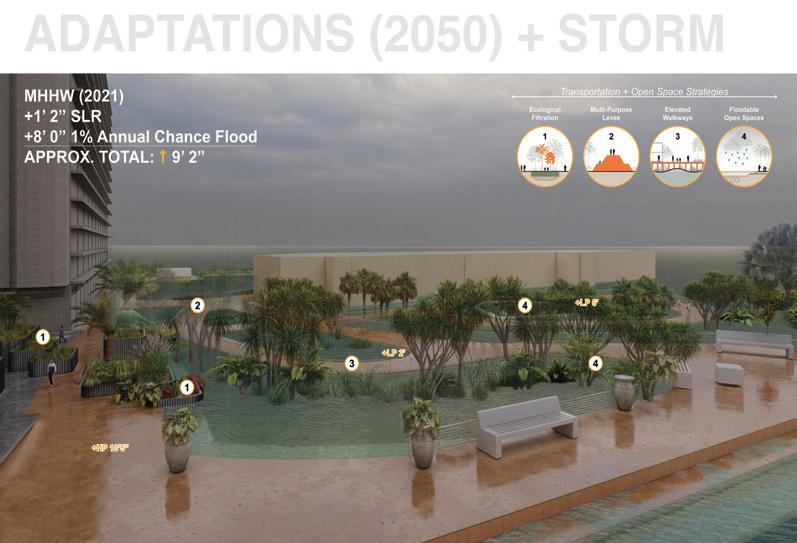

FIRMS University of Hawai‘i at Mānoa School of Architecture, Sea Grant, and School of Ocean and Earth Science and Technology
LOCATION Waikīkī, O‘ahu, Hawai‘i
RENDERINGS: ERIC TEEPLES, DARCH, ASSOC. AIA; GERMAN FAILANO, MA, MLA; DESIREE MALABED; GEORGINA CASEY; CHRIS LOMBOY, DARCH; JOSEPHINE BRIONES, DARCH, ASSOC. AIA; WENDY MEGURO, AIA, LEED FELLOW; CHIP FLETCHER, PHD
THIS DESIGN RESEARCH PROJECT IS AN EXCELLENT EXAMPLE OF HOW ARCHITECTS CAN PLAY A CRUCIAL ROLE in informing and influencing the public in making key decisions for the future. By providing site-specific architectural renderings of the impact of sea level rise on Waikīkī and illustrating potential adaptation strategies, the team successfully prompted input from the community and influenced government-led adaptation planning.
“The project should be lauded as its impact was felt immediately in its ability to communicate what could have been trapped in academia to the public at large the impending changes due to the climate emergency. Future development and human behavior may have already been positively modified, meaning the reach of this exercise may be felt for years to come.” — JUROR’S COMMENT

G70
CLIENT Withheld per owner's request
CONTRACTOR Nordic PCL Construction, Inc.
LOCATION Honolulu, O‘ahu, Hawai‘i
LOCATED IN THE WALKABLE COMMUNITY OF KAIMUKĪ , this build incorporates retail, restaurant, and office spaces as well as ample parking, a shaded plaza, and safe loading zones for vehicular circulation.
“The Civil Beat Plaza is a commendable urban infill for the Kaimukī Business District. Because it is a new building encompassing an entire block within a district comprised of older existing buildings, its location and design response were important. The project maintains/contributes to the character and scale of the Kaimukī business corridor through architectural forms that utilize varying building setbacks, materials and color. The project continues the pedestrian sidewalk experience by locating the parking underground and service/drop off operations at the rear.” — JUROR’S COMMENT


AWARD OF MERIT
RESIDENTIAL
FIRMS Solomon Cordwell Buenz (SCB); Benjamin Woo Architects (Architect of Record)
ADDITIONAL DESIGN FIRM
Jules Wilson Design Studio (Interior Design)
CLIENT Brookfield Properties; OliverMcMillan
CONTRACTOR Nordic PCL Construction, Inc.
LOCATION Honolulu, O‘ahu, Hawai‘i
PHOTO: ADAM TAYLOR PHOTOGRAPHY
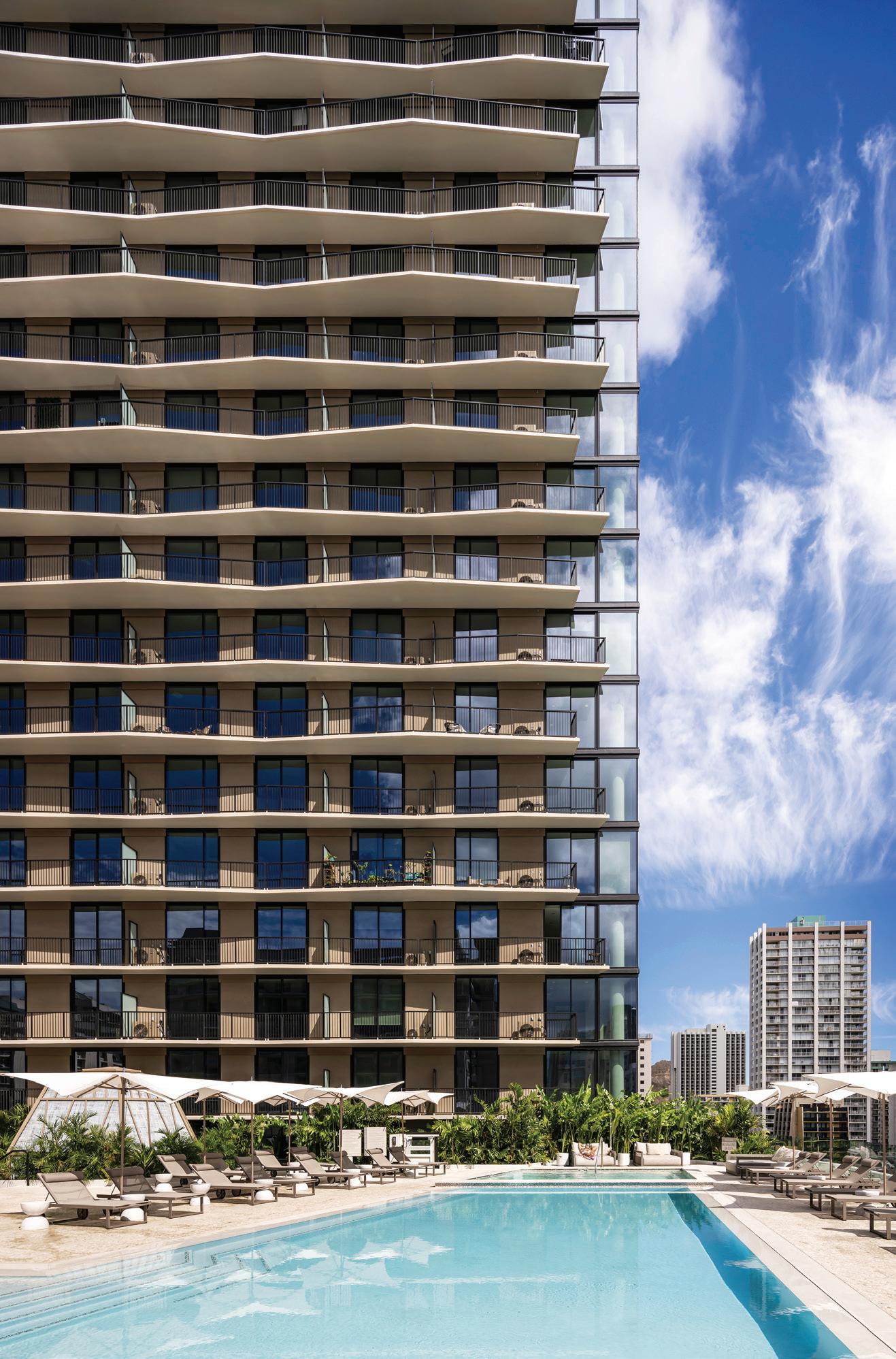
ĪLIA WAIKĪKĪ REDEVELOPED 2.5
LACRES OF ALI‘I TRUST LAND IN THE HEART OF WAIKĪKĪ into a commercial mixed-use rental project including the only full-service grocer in the area. The 28-story tower, which includes 91 affordable housing units, is part of the revitalization of the Kūhiō Avenue Corridor. The preservation of heritage trees and iwi kūpuna demonstrates a deep respect for local culture and natural heritage.
“The social, wellness and community project drivers are commendable. Beyond the non-mandated incorporation of affordable rental units, and being Hawai‘i’s first Fitwel certified project, the project’s tripleheight urban lanai offers a unique and welcoming addition to the Waikīkī pedestrian experience.”
— JUROR’S COMMENT
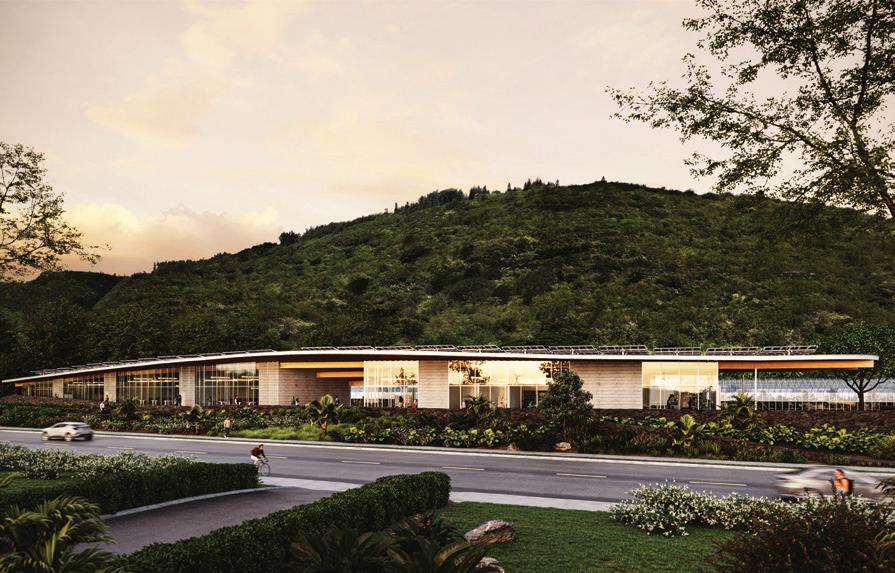

AWARD OF MERIT UNBUILT
FIRM AMA A/E
ADDITIONAL DESIGN FIRM Sasaki
CLIENT College of Tropical Agriculture and Human Resources, University of Hawai‘i at Mānoa
LOCATION Honolulu, O‘ahu, Hawai‘i
RENDERING: EPIC INSPIRED
THE MĀNOA AGRICULTURAL
INNOVATION AND LEARNING
EXCHANGE PROJECT (MAILE) is a conceptual design for the University of Hawai‘i at Mānoa College of Tropical Agriculture and Human Resources (CTAHR). The design proposes an integrated relationship between agricultural landscape, institutional research, and community to illustrate the principles of sustainable agriculture employed centuries prior in this valley neighborhood, creating a meaningful whole of both past and present.
“The design proposal is an example of didactic architecture. A structure and landscape that transcends a space for learning by serving as an instrument for resource conservation, resiliency, and agricultural research.”
— JUROR’S COMMENT
“Another important distinction in sustainable design is the ability to be a careful steward of our physical resources. This project could have replaced what some might throw away as a brutalist building from a time gone by and yet the client and design team saw the promise of a tactful retrofit that gives this project a new life with today's technology.”
— JUROR’S COMMENT

“The residence is unapologetically simple and understated, with its use of unadorned concrete walls that help to define the spaces and offer a contrast to the generous glass openings. The residence allows the residents to see the surrounding nature, while alternatively revealing itself to its natural surroundings.”
— JUROR’S COMMENT
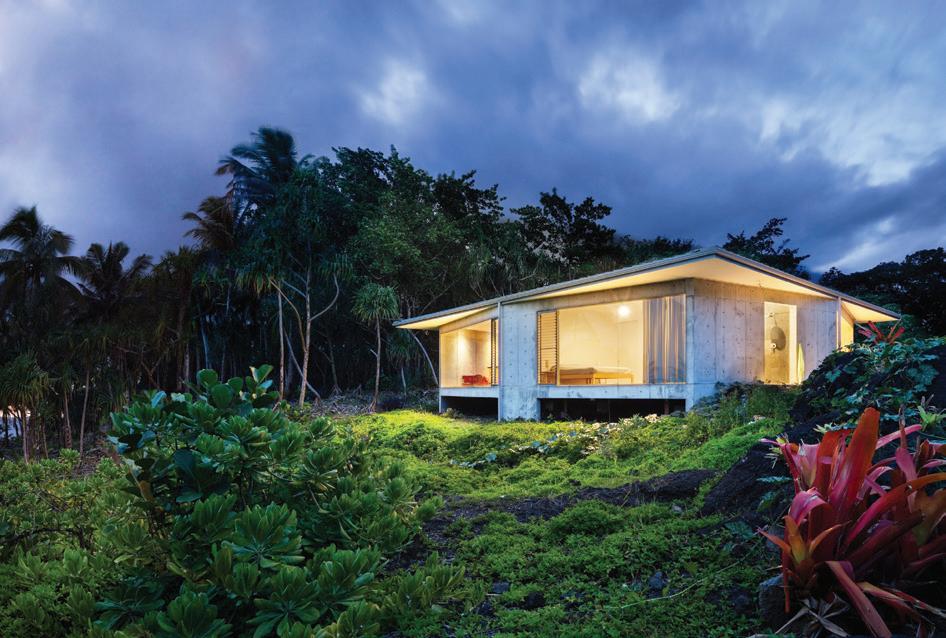
“A unique take on a typology that is often banal. A parking garage that strives to be a community space and catalyst achieving activation and a sense of connection through external facing pedestrian circulation typically contained in shafts. Balances a fresh approach with functional efficiency, setting the stage for the future cultural center it will ultimately serve.”
— JUROR’S COMMENT

HONORABLE MENTION COMMERCIAL/INDUSTRIAL
FIRM hi•arch•y llp (Lead Architect / Architect of Record)
ADDITIONAL DESIGN FIRM ZGF (Interior Architect)
CLIENT Hawaii State Federal Credit Union
CONTRACTOR Nordic PCL Construction, Inc.
LOCATION Honolulu, O‘ahu, Hawai‘i
PHOTO: OLIVIER KONING
HONORABLE MENTION RESIDENTIAL
FIRM Craig Steely Architecture
CLIENT Françoise Bourzat and Aharon Grossbard
CONTRACTOR Hilo Coast Construction
LOCATION Pāhoa, Hawai‘i Island, Hawai‘i
HONORABLE MENTION COMMERCIAL/INDUSTRIAL
FIRM Ferraro Choi And Associates
CLIENT County of Maui
CONTRACTOR Hawaiian Dredging Construction Company
LOCATION Wailuku, Maui, Hawai‘i
PHOTO: ANTON KISSELGOFF / HI MEDIA CREATIVE
USGBC HAWAII SUSTAINABILITY
AWARD
RESIDENTIAL
FIRM Peter Vincent Architects
ADDITIONAL DESIGN FIRMS Star Pierce Design (Interior Design) Aloha ‘Āina Landscaping (Landscape Design)
CLIENT Withheld per owner's request
CONTRACTOR Mokulua High Performance Builder
LOCATION Kahuku, O‘ahu, Hawai‘i
PHOTO: ADAM TAYLOR PHOTOGRAPHY
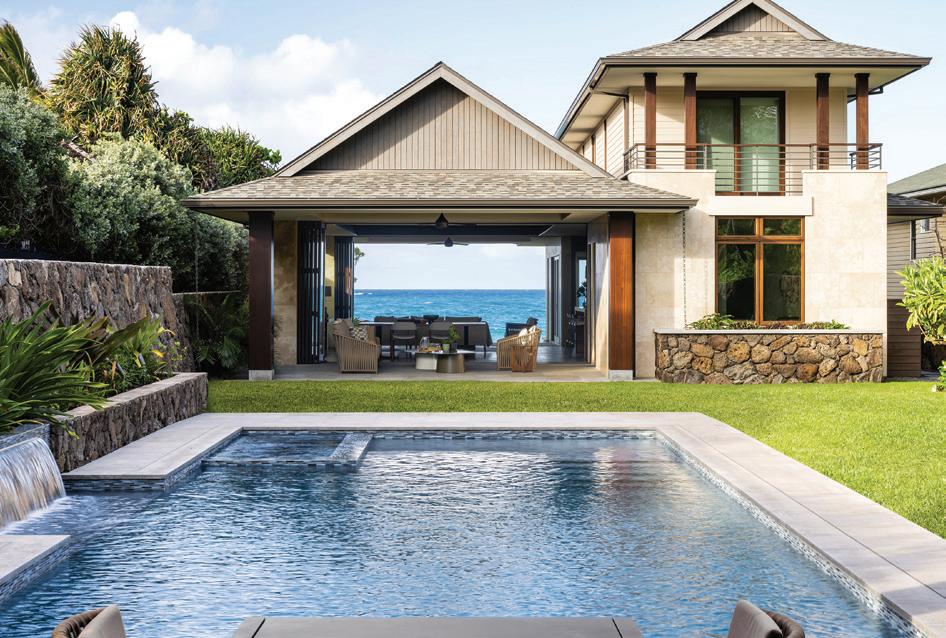
“Slice of Paradise represents the foundation for LEED-certified green buildings using well thought out deconstruction, design, and construction concepts executed flawlessly. The meticulous design and planning show through in every detail, both aesthetically and in its environmental benefits.” — USGBC HAWAII
HAWAII HOME+REMODELING
EDITOR ’ S CHOICE AWARD
RESIDENTIAL
FIRM ADM Architecture + Interiors
CLIENT Withheld per owner's request
CONTRACTOR Barker Kappelle Construction
LOCATION Honolulu, O‘ahu, Hawai‘i
PHOTO: ANDREA BRIZZI PHOTOGRAPHY
INTERIOR ARCHITECTURE
FIRM HDR, Inc.
CLIENT Hawaiian Airlines
CONTRACTOR Hensel Phelps
LOCATION Honolulu, O‘ahu, Hawai‘‘i
PHOTO: ARNEL DOMINGO
ABOUT THE PEOPLE’S CHOICE
AWARD The People’s Choice Award is selected following a two-week online voting process that is open to AIA members and the public at large.

“The structure integrates natural light and ventilation seamlessly through clerestory windows that take the breath away. The home feels light and airy and the architecture fits nicely into the neighborhood.”
— EDITOR'S COMMENT

Over 1,000 people voted in the People's Choice contest. The new breakroom, locker and shower rooms, briefing room, workstation area, and management offices leave end users with workplace pride.
T he Student Design Awards honor student achievements in the design studio and provide a forum for student design excellence to be celebrated beyond the academic setting.
AWARD OF EXCELLENCE
PEOPLE ’ S CHOICE AWARD UNDERGRADUATE
STUDENT Michael Griffin
SCHOOL Honolulu Community College

AWARD OF EXCELLENCE GRADUATE

“An integration of tradition and sustainability, the project stands as a beacon of aesthetic and functional excellence with a commitment to energy efficiency, well being, and ecological harmony.” — JUROR’S COMMENT
HONORABLE MENTION UNDERGRADUATE

STUDENTS Siwei Su / Jiaqi Xu
SCHOOL University of Hawai‘i at Mānoa School of Architecture
“Innovative use of the nondescript CMU block, elegant weaving of indoor and outdoor spaces, and seamless blurring of the boundary between ground and roof.” — JUROR’S COMMENT

STUDENT Edwin Sun
SCHOOL University of Hawai‘i at Mānoa School of Architecture
“This ingenious design stacks housing units in a way that creates a dynamic and opportunity-filled atrium space. The choice to use the extra space for green and blue roof opportunities give a hyper-local feel of a landscape-driven architectural response. ” — JUROR’S COMMENT

FIRM G70
CLIENT PBS Hawai‘i
CONTRACTOR Allied Builders System
LOCATION Honolulu, O‘ahu, Hawai‘i
PHOTO: PBS HAWAI‘I

Ala Wai Bridge
FIRM HDR, Inc.
ADDITIONAL DESIGN FIRMS Yogi Kwong Engineers (Geotechnical Engineer); V+M Structural (Bridge Structural Engineer); KAI Hawaii (Structural Engineer); PBR Hawaii (Landscape Design)
CLIENT Department of Transportation Services, City and County of Honolulu
LOCATION Honolulu, O‘ahu, Hawai‘i
RENDERING: HDR, INC.
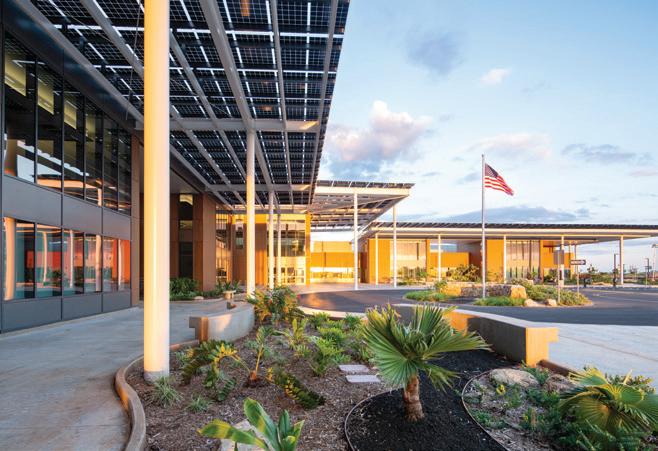
Daniel Kahikina Akaka Veterans Affairs Clinic
FIRM Ferraro Choi And Associates
CLIENT Hunt Companies Hawaii
CONTRACTOR Nan Inc.
LOCATION Kapolei, O‘ahu, Hawai‘‘i
PHOTO: ANTON KISSELGOFF / HI MEDIA CREATIVE
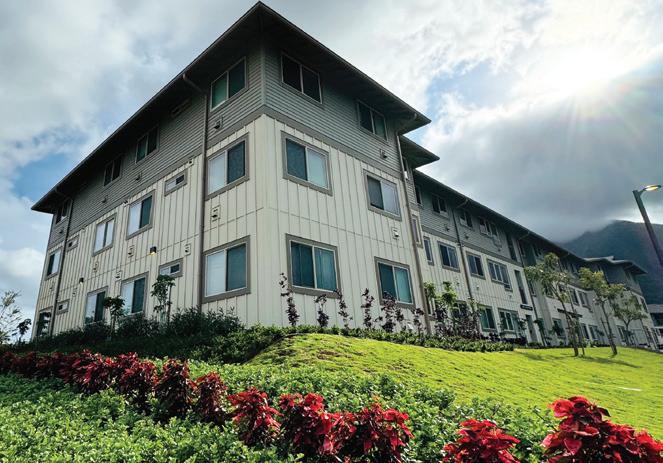
Kaulana Mahina
FIRM Ethos Architects LLC
CLIENT BIT Wailuku
CONTRACTOR Moss Construction
LOCATION Wailuku, Maui, Hawai‘i
PHOTO: DERIK ARAKI FINE ART PHOTOGRAPHY; MOSS CONSTRUCTION

Volcano Residence
FIRM Mork-Ulnes Architects
CLIENT Withheld per owner's request
LOCATION Volcano, Hawai‘i Island, Hawai‘i
RENDERING: VER3D
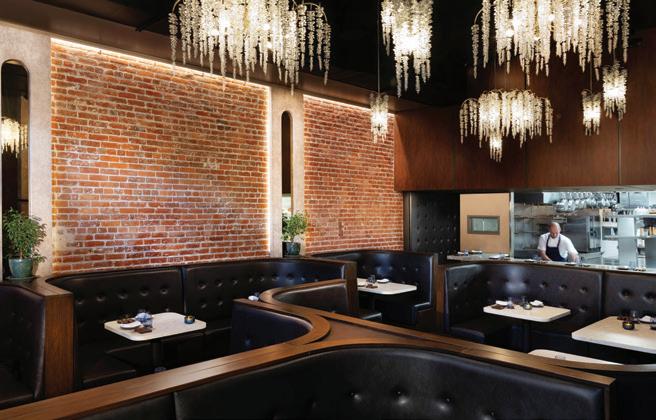
INTERIOR ARCHITECTURE
Senia
FIRM WRNS Studio
CLIENT Anthony Rush & Katherine Nomura
CONTRACTOR JBA Construction
LOCATION Honolulu, O‘ahu, Hawai‘i
PHOTO: OLIVIER KONING
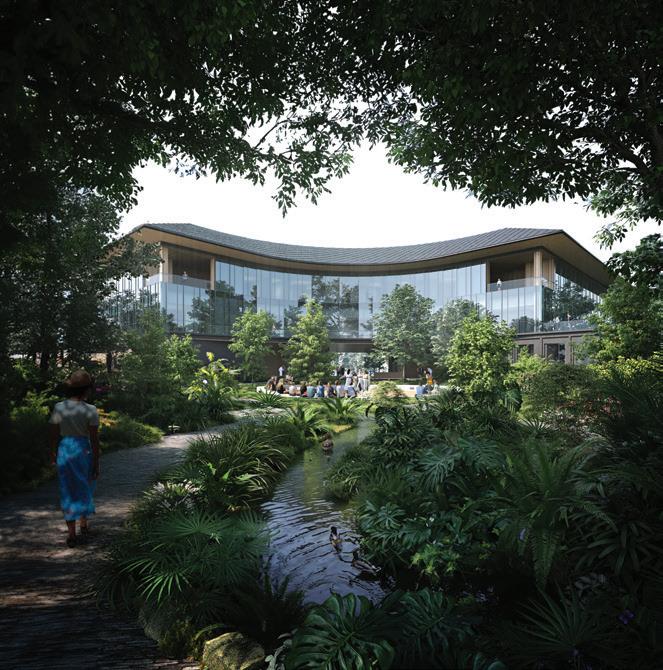
American Samoa Specialized Hospital
FIRM AHL
CLIENT LBJ Tropical Medical Center, American Samoa Government
LOCATION Tāfuna, American Samoa
RENDERING: AHL
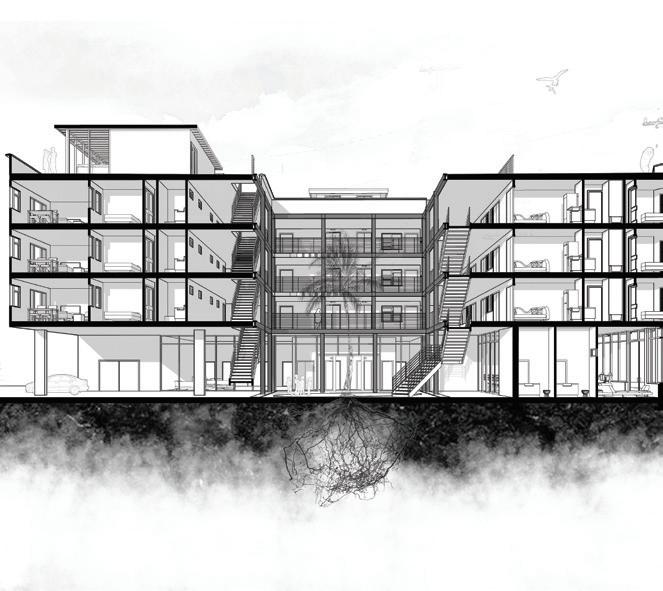
UNDERGRADUATE
Community Nexus
STUDENT
Jingsong Zhou
SCHOOL University of Hawai‘i at Mānoa School of Architecture

UNDERGRADUATE
Hala Learning Center
STUDENT
Sophia Abe
SCHOOL University of Hawai‘i at Mānoa School of Architecture

GRADUATE
Lē‘ahi Home & Lapa‘au Park
STUDENTS
Beau Nakamori / Hunter Wells
SCHOOL University of Hawai‘i at Mānoa School of Architecture

UNDERGRADUATE
Da Crater Spa’t
STUDENTS
Katherine Liu / Jazylnne Williamson / Soraya Ortiz
SCHOOL Chaminade University of Honolulu

UNDERGRADUATE
‘Kaka‘ako Cocoon’
STUDENT
Jennifer Rodriguez Flores
SCHOOL University of Hawai‘i at Mānoa School of Architecture
HTTPS://WWW.AIAHONOLULU.ORG/


